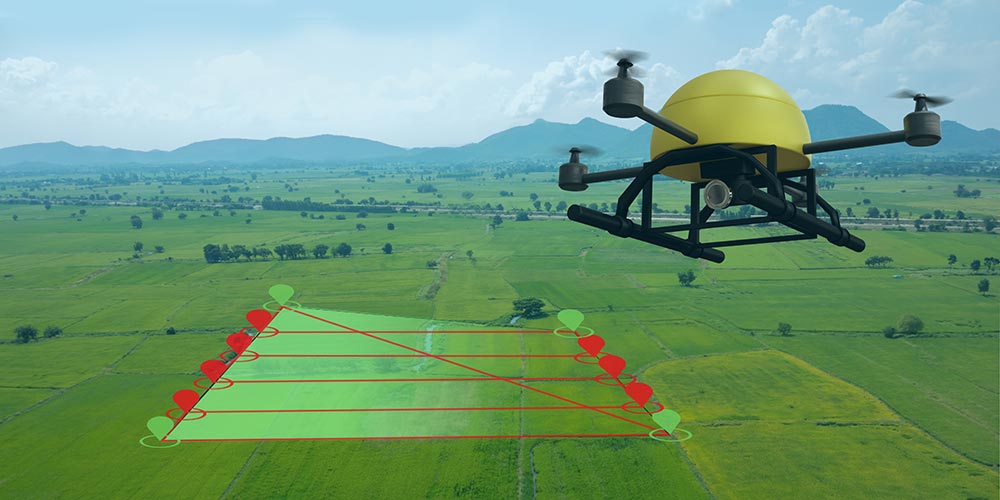HOME / Applications / Injecting AI into Drones
Injecting AI into Drones

Human-operated drone navigation faces limitations and inefficiencies due to GPS inaccuracies, environmental obstacles, and suboptimal route planning.
By integrating miniaturized AI systems onto drones, coupled with advanced algorithms and 3D mapping capabilities, AI-assisted drones can analyze real-time data and topographical information, optimizing flight paths on-the-fly while avoiding obstacles. The addition of AI can extend flight time, improve coverage, and reduce energy consumption, making AI-flown drones more effective for re-mapping, environmental monitoring, and other applications.
Challenges such as atmospheric pressure change, G-force, humidity, and temperature fluctuation can impact sensor accuracy and processing performance. Battery life is another critical factor; AI computation demands significant power, reducing flight duration. The added weight of AI components can also hinder maneuverability and operational range.
One solution is Neousys' AI mission computer, designed with optimized SWaP (Size, Weight, and Power).
Neousys FLYC-300, an NVIDIA Jetson edge AI computer weighing only 298 grams and delivering up to 100 TOPS AI computation, ensures reliable drone navigation and operation even without the GPS signal by leveraging pre-loaded 3D geological maps for precise location triangulation. Supporting various sensors and cameras, including RGB, hyperspectral, infrared, LiDAR, and 3D cameras, it is ideal for real-time drone imagery collection, environmental monitoring, and infrastructure inspections. It features multiple connectivity options, including two Ethernet, two USB3.2, and two GMSL2 ports, ensuring seamless data transmission and analysis.
Additionally, FLYC-300 accommodates 5G/4G communication modules for real-time video transmission and supports a wide voltage input range (4S to 14S battery packs) via the XT30 DC-IN connector. Its configurable Universal Asynchronous Receiver/Transmitter (UART) enables seamless connection and communication with the flight controller, allowing drones to avoid obstacles, navigate accurately, and efficiently scout targeted areas. This advanced integration enhances drone efficiency, reliability, and overall operational performance.
